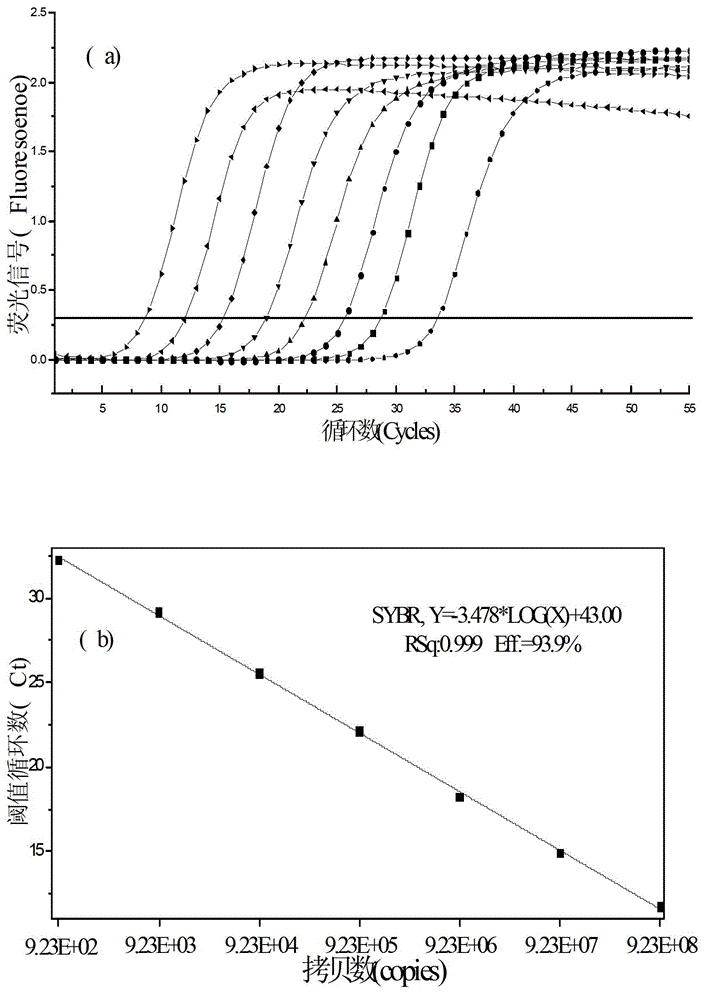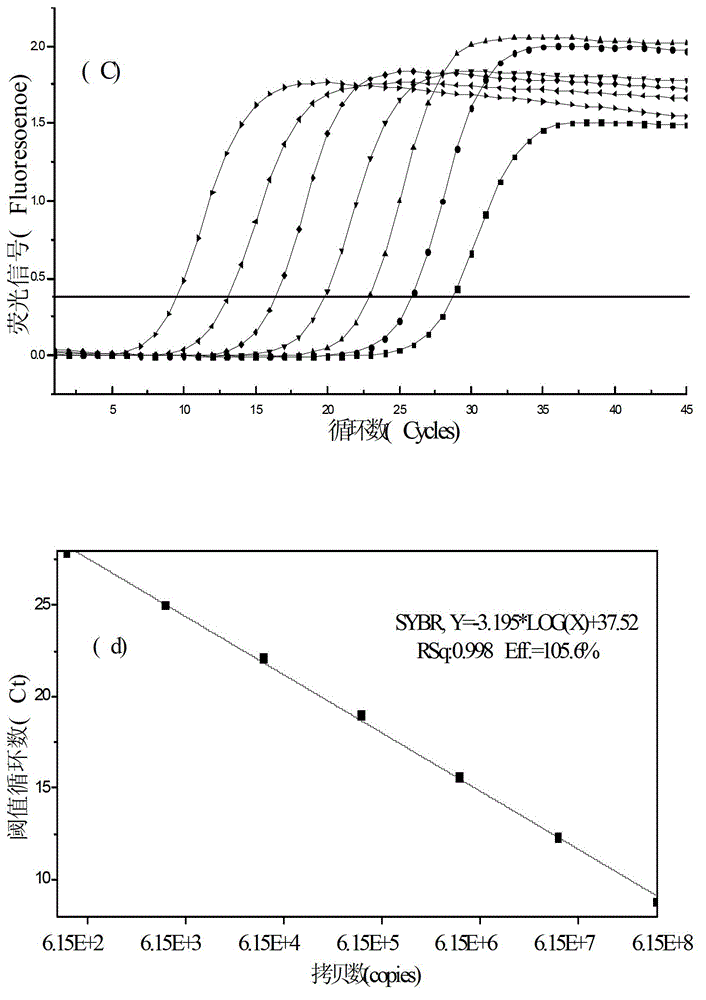Real-time fluorescent quantitative PCR detection method for phosphorus accumulating bacteria in sewage treatment plants
A real-time fluorescence quantitative, sewage treatment plant technology, used in the determination/inspection of microorganisms, biochemical equipment and methods, etc., to achieve high amplification efficiency, good linearity, and good versatility.
- Summary
- Abstract
- Description
- Claims
- Application Information
AI Technical Summary
Problems solved by technology
Method used
Image
Examples
Embodiment Construction
[0045] The present invention will be further described below in conjunction with the accompanying drawings and embodiments.
[0046] 1.PCR primers
[0047] Using polymeric phosphate kinase gene as a marker, PCR primers for five evolutionary branches of phosphorus accumulating bacteria were selected. The primer names, primer sequences, and amplicon lengths are shown in Table 2.
[0048] Table 2 Primer sequences used in conventional PCR amplification
[0049]
[0050] 2. The source of the standard
[0051] The sources of standard products used in the present invention are all reactors for treating actual domestic sewage. The influent in the anaerobic zone of the reactor has two parts, the test raw water and the reflux liquid in the anoxic zone 1, and the NO in the two parts of the influent 2 - -N and NO 3 - -N content is lower, eliminating NO 2 - -N and NO 3 - The effect of -N on the anaerobic phosphorus release reaction enables the phosphorus accumulating bacteria...
PUM
| Property | Measurement | Unit |
|---|---|---|
| PCR efficiency | aaaaa | aaaaa |
Abstract
Description
Claims
Application Information
 Login to View More
Login to View More - R&D Engineer
- R&D Manager
- IP Professional
- Industry Leading Data Capabilities
- Powerful AI technology
- Patent DNA Extraction
Browse by: Latest US Patents, China's latest patents, Technical Efficacy Thesaurus, Application Domain, Technology Topic, Popular Technical Reports.
© 2024 PatSnap. All rights reserved.Legal|Privacy policy|Modern Slavery Act Transparency Statement|Sitemap|About US| Contact US: help@patsnap.com










